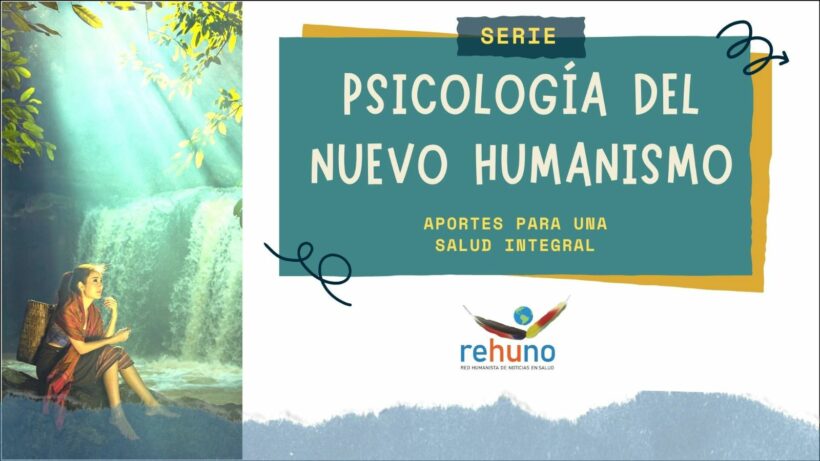From the Humanist Health News Network REHUNO Health we are launching a place of exchange where we find a new look at daily life based on experiential and existential psychology (the Psychology of New Humanism), and which gives some concrete proposals of personal work to reach a full sense of our existence and a life free of unnecessary suffering. It is not, therefore, therapeutic psychology, nor does it deal with any pathology, but is aimed at anyone who wants to understand themselves and have the tools, if they so wish, to initiate a positive change in their lives. Psychological well-being is undoubtedly one of the foundations of integral health, which is why it is an aspect that must be addressed.
We invite you to put these proposals into practice and also to contact us and tell us about your experience. Write to us!
By Jordi Jiménez
In the previous article we talked about the request in which we recover the positive registers accumulated with the acknowledgements. However, a question may arise: Who do we ask?
As with the request, the human being has a very interesting mechanism that we call the Inner Guide. If we want to give a definition, we could say that the Guide is an image or a feeling (obviously internal) of someone or something that has the best attributes and that can give us the response we request or need. This image has to have at least these three qualities to be a guiding image: Strength, Wisdom and Kindness. If any one of these attributes is missing, our relationship with that image will not be constructive.
All of us, even as children, have silently “talked” to someone in our visions to whom we have requested help or advice in times of difficulty. Older people in all cultures also make their prayers (their requests) by connecting with their guiding images, or simply, in moments of loneliness or doubt, we establish a kind of conversation with a loved one whom we ask or request, regardless of whether that person is alive or not. Sometimes we also think about what someone else would have done in our place. Sometimes we tend to follow what we consider to be good examples and imitate the attitudes and behaviours of others that we consider to be exemplary. In all cases we can observe that although everyone has a different image of the Inner Guide (according to their culture and beliefs), the mechanism is the same for everyone.
In the first two articles of this series, we talked about mental images and their characteristics. If you have read them, you already know that a mental image can be visual or otherwise, and that it can also have brightness, clarity and emotional charge, among other qualities. With the theme of the Inner Guide, we are using mental imagery for a type of meditation that is already somewhat advanced. It is a dynamic meditation in the form of a story that has two phases: in the first phase we have to “configure” the image of the Inner Guide with its best attributes and qualities; in the second phase we ask her for or ask her for whatever we need, be it guidance in life, inspiration, protection, etc.
There is a written and audio guided experience specifically designed to configure the Inner Guide. In this configuration we can let an image emerge freely associated with what are for me the best qualities that a true Guide can have, or we can try to imagine someone who exists or who existed and place in that image of memory the best qualities of a Guide.

Image Sansit (Pixabay)
This guided experience can be found at the following address: http://www.silo.net/system/documents/49/original/Exper_en.rtf
Once the Guide is configured (it is not something that is achieved on the first day, it takes time) it can be used as an image that accompanies us in our daily lives, not only in moments of doubt or need, but also in moments of joy. It is like using gratitude and request, but now associated with the image of the Guide, i.e., I thank my Guide for all the good things that have happened to me and I make a request to the Guide in times of need.
If I record this image of the Guide with the registers of thanks and requests, it will become an exceptional and very useful tool in our daily lives. Over time the Inner Guide can become independent of the daily mechanicity, as if it takes on a life of its own, and can give us guidance and responses in some unexpected moments, even without “calling” it. For example, in a conflictive situation that arises one day in our environment, we can give a positive and constructive response to ourselves and others almost automatically. As we repeatedly embody this type of wise, strong and caring guiding image in our memory, we will cultivate a new attitude towards the world and situations, and our responses and direction in life will be guided by these internally strengthened qualities.
It is therefore very important that we configure the Guide with the best attributes of strength, wisdom and kindness, for it is these intangibles that will give us direction in daily life. As we strengthen our relationship with this image, the questions and responses will deepen, connecting us to unexplored spaces of consciousness and giving us guidance and positive reference in our daily lives.
We hope you find these practices useful and you know that you can tell us about your experiences at: rehunosalud@gmail.com
REHUNO Health






